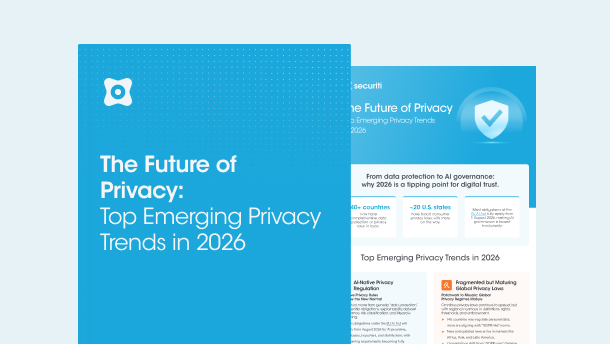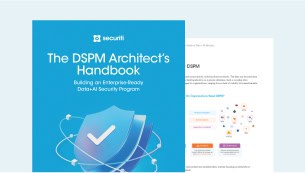With an increase in data breach incidents coupled with an increasing rise of data privacy regulations all across the globe, organizations are now required to revisit their privacy practices and strategies on how they handle their consumers’ personal data. The quest for better handling of consumers’ personal data is incomplete without a full understanding of a concept called “Data Discovery”.
Rehan Jalil, CEO Securiti, in his book titled "PrivacyOps: Automation & Orchestration for Privacy Compliance” defines data discovery as, “A system of cataloging the data collected by the organization, how that data is used, stored and processed, and how that data travels within and beyond the organization”.
The Role of Data Discovery
In today’s digital world, almost every aspect of our lives revolves around personal data. From social media platforms to retailers, banks, and governments, almost all the services we use involve the collection and analysis of personal data. This can include your name, age, credit card number, postal address, IP address, social security number, driver’s license number, passport number, and more. These are all collected, analyzed, and most importantly, stored by organizations.
In most organizations, data catalogs and maps are hidden away in outdated spreadsheets and Powerpoint or Visio diagrams, making it impossible to bring clarity to this gigantic mesh of interconnected interfaces, systems, and processes. There are multiple data collection and processing elements combined with in-house and cloud-based application and storage infrastructure, with highly fluid data sharing and processing agreements in place. With more than 80% of enterprise workloads now moving to the cloud, organizations are finding it hard to document and track the flow of information within their vendor’s cloud infrastructure.
Data discovery enables organizations to build and maintain accurate records of personal data by discovering data across multiple structures and silos, analyzing it, and deriving meaningful conclusions. Data discovery refers to a collaborative documentation process that is centered around generating business value and helps organizations improve business decisions based on a deep analysis of consumers’ data.
How to manage personal data under GDPR
In January 2012, the European Union realized that they needed to be prepared for the “digital age” which meant they needed to make a plan for data protection reforms all over the European Union. Almost four years later, the European Commission reached an agreement on what these reforms will involve and how they will be enforced.
The current EU data protection framework consisting of the General Data Protection Regulation (GDPR) and e-Privacy Directive applies to organizations in all member states of EU and has extraterritorial applicability, i.e. it applies to organizations that process personal data belonging to EU data subjects, whether or not the organization is situated in the EU. As a result, it has implications for businesses and individuals across Europe and beyond.
To remain compliant with the GDPR, organizations must process personal data only on one of the following legal bases:
- Data subject’s consent
- Performance of a contract
- Compliance with a legal obligation
- Protection of vital interests of data subjects
- Performance of a task carried out in the public interest
- Legitimate interests pursued by the data controller.
Here are some of the steps that can help you manage personal data under the GDPR.
- Audit all personal data and store it with its correct data subjects
- Update your privacy notice informing users how their personal data will be handled
- Respond to data subject’s access requests within stipulated time frames
- Maintain updated and comprehensive consent records
- Review the data you hold on children
- Establish procedures to detect, report and investigate security incidents and personal data breaches
- Review your processes around Data Privacy Impact Assessments (DPIAs)
- Appoint a Data Protection Officer (DPO) if required
- Ensure that the foreign destination provides comparable privacy safeguards while making cross-border data transfers
- Maintain updated and comprehensive records of data processing activities to demonstrate compliance.
How Data Discovery Can Help Protect Your Data?
To comply with the GDPR and other global privacy laws, your data discovery tool must have the following basic functionalities.
- Discover: The first step in data discovery is to find out where all your data is stored. Most organizations have data in structured and unstructured data stores and silos all across the organization, making it difficult for the organization to keep track of data with its correct data owners. Data discovery enables organizations to discover all the data so that an accurate inventory in the form of a centralized catalog can be maintained.
- Classify: Once data sets have been discovered, they need to be classified as per their sensitivity, types, formats, and risks. This involves classifying data sets using a sensitivity index such as Restricted, Private, and Public. To keep pace with the growth in structured and unstructured data, automation can be used to categorize sensitive data according to data classification policies. These classification tags will ultimately enable organizations to enforce appropriate security controls suitable for each data set.
- Protect: Implementing security controls and encryption of highly sensitive data is essential to help you prepare for threats. Organizations must implement effective and compliant security controls keeping into consideration the industry best practices and cost of implementation. Having appropriate security controls will enable you to report personal data breaches and security incidents within the stipulated time frames of applicable privacy laws.
- Monitor: The next step is to monitor data risk posture and assess the impacts of data processing activities. Due to limited resources and budget constraints, organizations need to quickly identify their highest risk data assets and monitor this data.
- Comply: Certain standards need to be fulfilled to comply with global privacy laws. For example, the GDPR requires organizations to maintain updated records of data processing activities. It also requires organizations to conduct data protection impact assessments whenever a particular data processing activity is likely to result in a high risk to the rights and freedoms of data subjects. Therefore, a good data security tool should have the capability to produce updated audit reports and comply with other legal requirements.














































